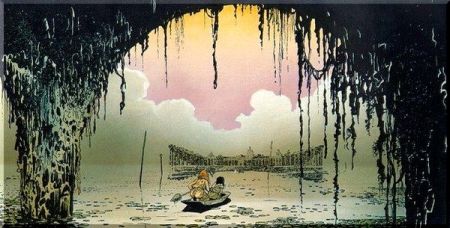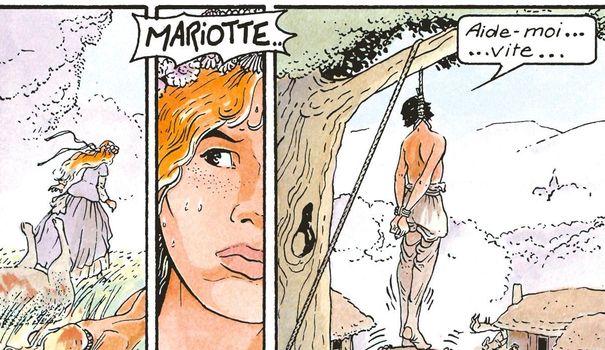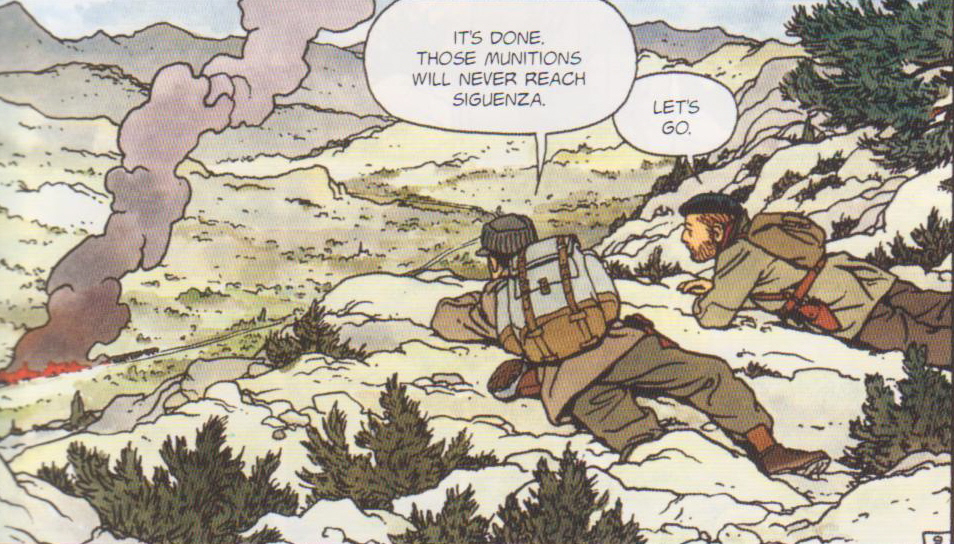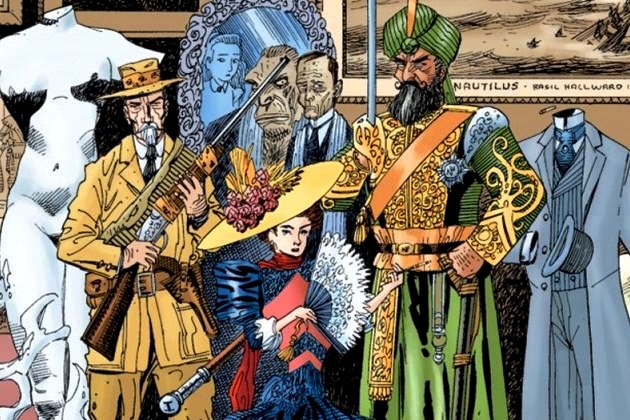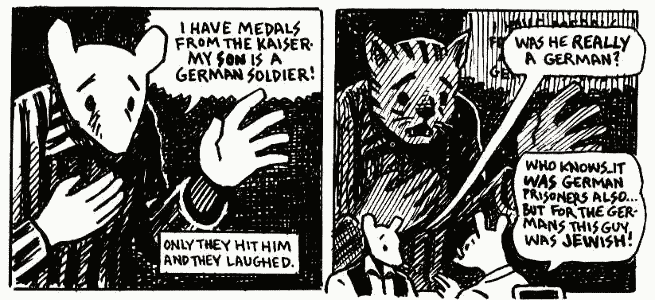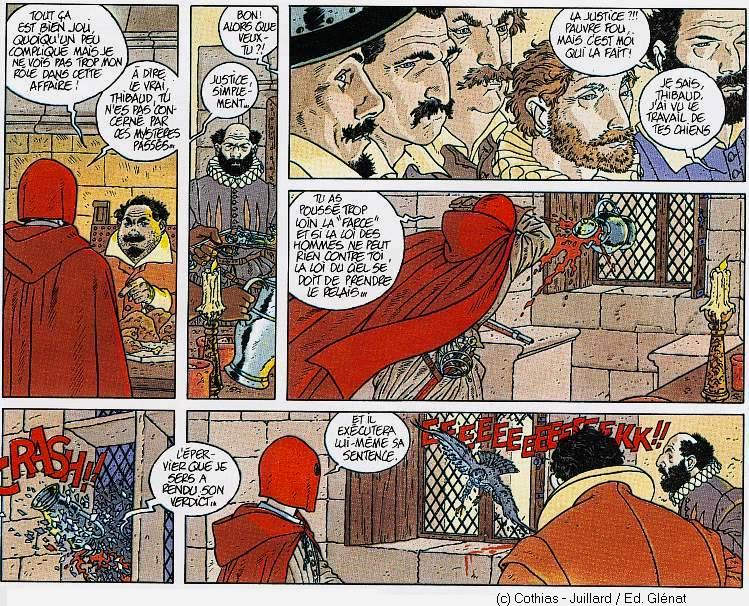The 5 Greatest Historical Graphic Novels March 26, 2015
Author: Beach Combing | in : Contemporary, Medieval , trackbackGraphic novels must be, surely, the most underestimated genre in the modern arts: perhaps about 40% of the adult population have such strong feelings that, with the exception of Charlie Brown, they could not bring themselves to pick up a comic. This is a tragedy. There are great works out there that have been largely ignored and just to make things more difficult many are in languages that most readers of this blog will not read. More seriously still many comic book writers in English cannot manage these languages. This blogger doubts, for example, that either Neil Gaiman or Alan Moore, the two most famous modern British comic writers, read French and yet some of the most fabulous comics ever written, lie on the shelves of second-hand French bookshops. It is as if Dostoevsky does not have a translation of Shakespeare available in a tongue he understands…
In no particular order, here is a list of five of the greatest historical graphic novels (known to this blogger). English, French and Italian masterpieces are included: Germany and Spain have disappointed. Any entrepreneurs out there might want to think about finding an American publishing house capable of bringing some of these marvels to a wider public.
Les Compagnons du crépuscule (Companions of the Twilight): This was a three part graphic novel, 1984-1990, set in the Hundred Years War and written and drawn by Francois Bourgeon. Depressingly it has never been translated into English: very depressingly not a single work that Bourgeon has written has yet been translated into English…. The three heroes of the book, only one of whom survives the saga, include a knight without a face, a cowardly young squire and a witch’s daughter. The genius of CdC is in mixing the material world of the Middle Ages including torture, execution and extreme poverty with the supernatural world including fairies, werewolves and mermaids. And what a story! Forget Maupassant and Stendhal, one of the great scenes in French literature is the coward’s unlikely act of final heroism. Michel Thiébaut was so impressed by Les Compagnons that he wrote a descriptive work describing the origins of Bourgeon’s myth: Dans le sillage des sirènes. Bourgeon deserved such a tribute. The best work here?
No Passarán (They Shall Not Pass): Despite dealing with Spain this three volume work, 2000-2008, was actually, first, published in Italian by Vittorio Giardino: Spanish comics don’t seem to have much to offer… Max Fridman is a French Jew living with his daughter in Switzerland; his wife is dead. He is a commercial traveller with a past: for a time he worked for the French secret services and for a time he fought in the Spanish Civil War on the side of the Republic. Vittorio Giardino has dedicated various stories to Max but No Passarán is the longest and perhaps, though there is strong competition from Rapsodia Ungarese, the best. There is a strong sense of the rising tide of evil as the 1930s come to a close. Max goes back to Spain in the weeks before Barcelona falls (‘I’m losing the Battle of the Ebro…’) to discover the fate of a friend. He meets, instead, a drunk Irish veteran, a stunning journalist (Giardino’s women are the most beautiful in comicdom), fifth column saboteurs, and a Russian general. Fridman has passed through idealism to a simple desire to survive for his daughter and trembles when bombs fall. The Fridman stories have been translated into Spanish and French, and this one, thanks the gods, into English…
League of Extraordinary Gentlemen: Alan Moore is possibly the greatest writer of comics in the world today. But his books, while all having at least flashes of genius, are uneven. From Hell and even Watchmen are interesting but not among the best of the best. Whereas Top 10 (and this from someone who hates superheroes) and the League of Extraordinary Gentlemen (1999-present) see Moore looking down at the opposition from his cloud castle: they are so very very good. For those who have not had the pleasure the LoEG are Victorian heroes taken from fiction, including the Invisible Man, Captain Nemo and Dr Jekyll, who are helping the British Empire survive, inter alia, attacks from Mars. In the later books Moore perhaps becomes a little too recherché but in the two principle volumes the wit, the violence and the combination of a rabid Rupert the Bear and a steam punk Nautilus is a joy beyond compare: Hyde raping the Invisible Man is another scene that is difficult to forget…
Maus: Art Spiegelman wrote Maus, 1981-1992, as the history of his parents’ troubles in the Second World War. As his surname suggests, his mother and father were Jewish and they somehow survived the first part of the war in Poland before being brought to Auschwitz, where incredibly they both made it to the summer of 1945 on this side of the river Styx. Maus is most famous for the conceit of making all characters into animals: Jews mice, Germans cats, Americans dogs etc etc But far more interesting is the choice of mixing past and present into what is really a love story, love between father and son but above all between love wife and husband, omnia vincit amor. Art records his interviews with his father in trying to re-establish his family’s past and describes and draws out a man who has been permanently damaged by his experiences and who damages, in turn, those around him. One of the chapter titles says it all: My Father Bleeds History.
Les Sept Vies de l’Épervier (The Seven Lives of the Sparrowhawk): This is actually a single graphic novel. However, the Seven Lives was part of a larger more ambitious cycle of graphic novels written by Patrick Cothias from the early 1980s to the late 1990s, and designed by various French artists. All together the Sept Vies cycle include nine different graphic novels (thousands of pages) set in seventeenth-century France: heroes include the Man in the Iron Mask, Cyrano de Bergerac, Moliere, D’Artagnan, Ninon and others borrowed from fiction and history. Beach has not read them all yet for the simple reason that, with one exception, they have not been collected into a single volume and each collection involves buying between three and eight separate books from second hand book sellers, very frustrating. Again, as in Les Compagnons, there is the jarring combination of the supernatural and the material and there is a brooding malaise in the world. Few of the heroes die in their beds, unless, of course, this being seventeenth-century France, poison is involved.
Other contenders: Patrick Cothias has also written a series on the First World War entitled Ambulance 13 (unfinished). Berlin by Jason Lutes describes the rise of Nazism in the capital in the 1920s. Hergé’s mid Tintin books touch on Europe just before the Second World War, though they are not his best and they are, in a sense, contemporary reportage. Les Tours des Bois-Maury in French by Hermann, gives a wide sweep to the middle ages: it begins in the crusades and ends in the jungles of the New World. More contributions? drbeachcombing AT yahoo DOT com Please no Asterix…
26 Mar 2015: One of the reasons I wrote this post was to bring in some more harvest, to learn about other great graphic novels. Two emails on the subject were waiting for me when I woke up this morning.
First, Chris S: I’m a huge fan of Larry Gonick’s Cartoon History of the Universe. Three volumes, covering the beginning of the universe, ancient Greece, ancient China, ancient mideast, and so much more. His bibliography is peerless.
Second, Mike Celeste: There are so many: Jack Jackson’s Comanche Moon series that describes the Comanche wars in Texas (Jaxon was also a prize-winning historian); maybe you didn’t include Joe Sacco because his subject matter is fairly contemporary but Safe Area Goradze and Footnotes to Gaza are as good as any other journalism/history I’ve seen about the revolutionary chaos in what was once Yugoslavia and the on-going horror of the Israel/Palestine story; and there is Bosnian Flat Dog, by Andersson and Sjunnesson, a sort of Black Lamb and Grey Falcon look at the Balkan subconscious; Sacco also did a panoramic strip about the Somme recently, and that brings up the many war comics that are available. Most take the point of view of a common soldier, Two Generals by Scott Chantler is a good example, or It Was The War in the Trenches and Goddamn This War by Tardi and Verney, but there are lots out there including standard agit-prop for the masses; the Civil Rights Era from the US has been the subject of numerous comics. Right now there is March, by Lewis and Aydin, and Ho Che Anderson’s King; then there are the alt-history/superhero/lit-heroes-come-to-life fictions such as the several that you mentioned. Let me just add one to that list: Alan Moore and Melinda Gebbie’s Lost Girls, a work of pornography featuring Dorothy Gale, Wendy Darling, and Alice (of Wonderland). Set in the early 20th Century, our heroines witness the birth of Modernism, including the famous premiere of Stravinsky’s Rite of Spring, but World War I puts an end to all that… There are so many. And so many good ones!

